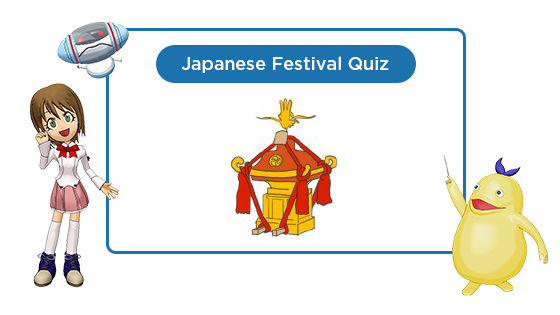Lesson 15Expressing Desires - Festivals -
Let's see
Festivals
View movie
Explanation through photos
Click (tap) to enlarge and show explanation.
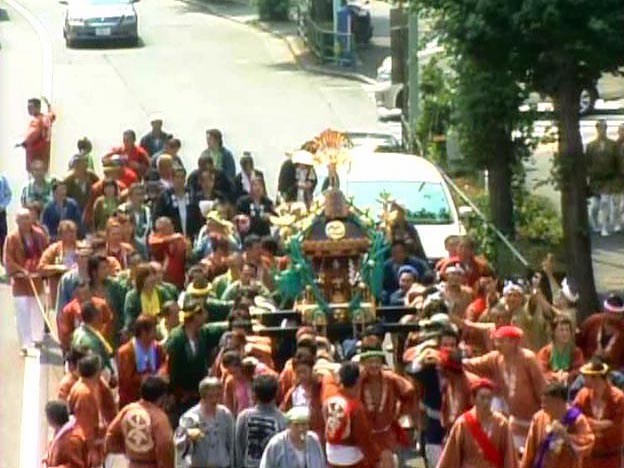 Festival
Festival
This is a festival in Japan. Various festivals are held in many places in Japan throughout the year. But summer and fall is when festival season really takes off. Festivals are crowded with people and lively.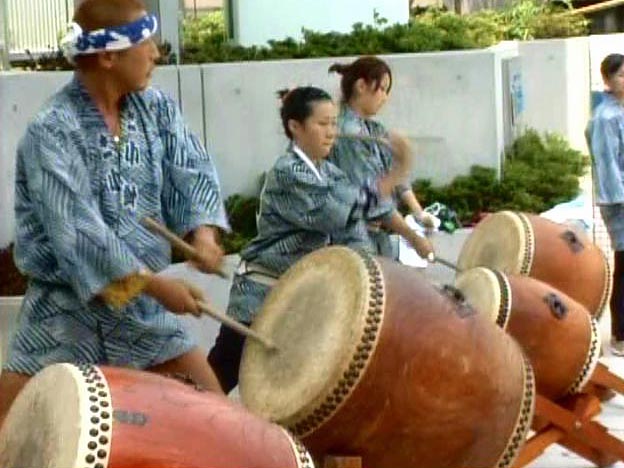 Japanese drum
Japanese drum
Wadaiko is a traditional Japanese drum. It makes a low and powerful sound and is often played at festivals and bon dancing.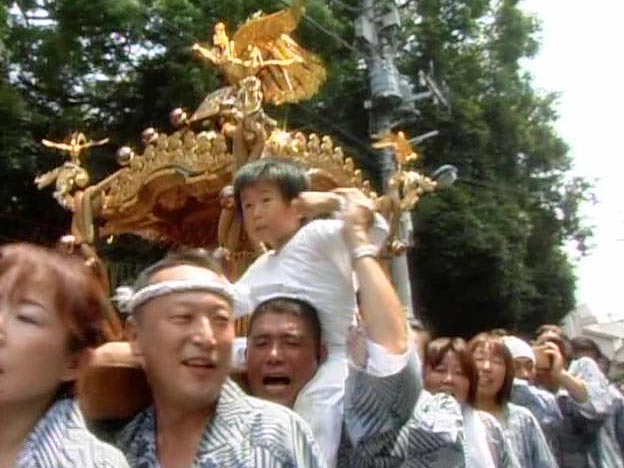 Omikoshi portable shrines
Omikoshi portable shrines
Omikoshi, a portable shrine, is said to be where the god rides when going out of the shrine. The size and shape are different depending on the shrine. Children and women also participate in carrying omikoshi. Yo-yo
Yo-yo
This is a yo-yo that is sold at festivals. This type of yo-yo is a small balloon in which there is a little water. Put the rubber band of the yo-yo on your finger and play with it by tapping the yo-yo against your palm.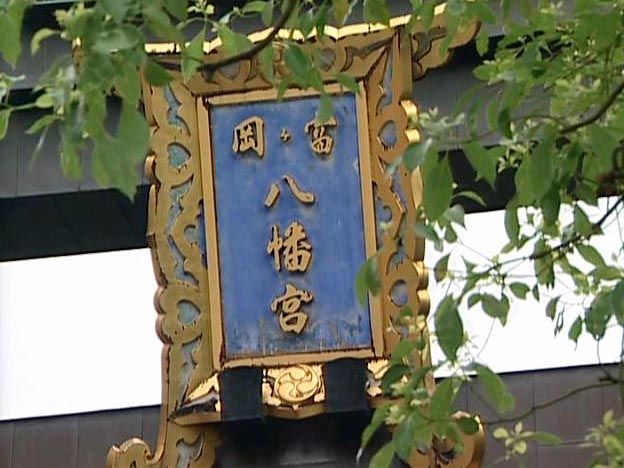 Tomioka Hachimangu
Tomioka Hachimangu
This is a shrine in Tokyo called Tomioka Hachimangu. It is famous for having the largest portable shrine in Japan.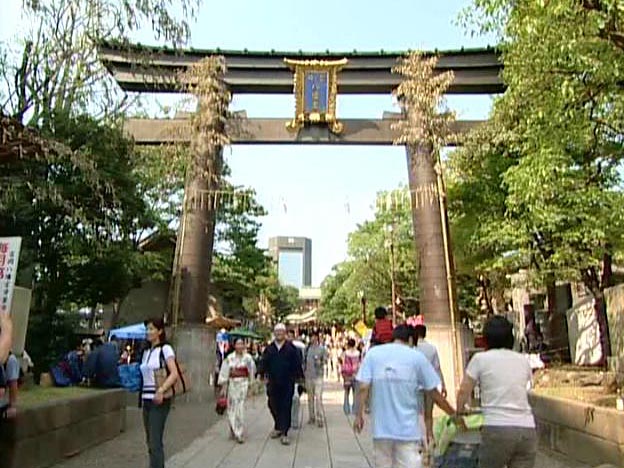 Torii gate
Torii gate
This is a torii gate at the entrance of a shrine. It is said to separate the realm of the gods from that of human beings.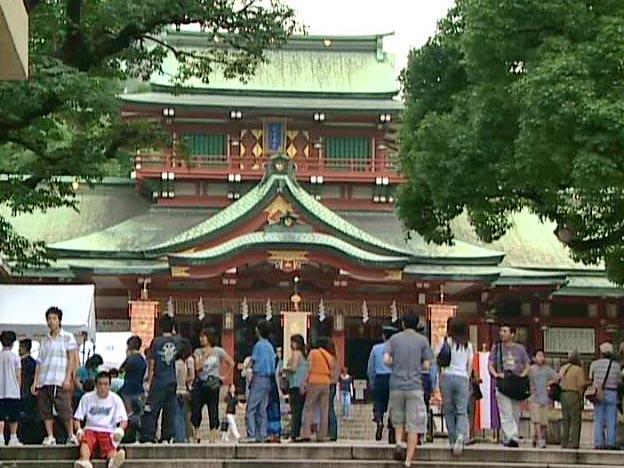 Main building of shrine
Main building of shrine
This is the main building of the shrine where the god resides.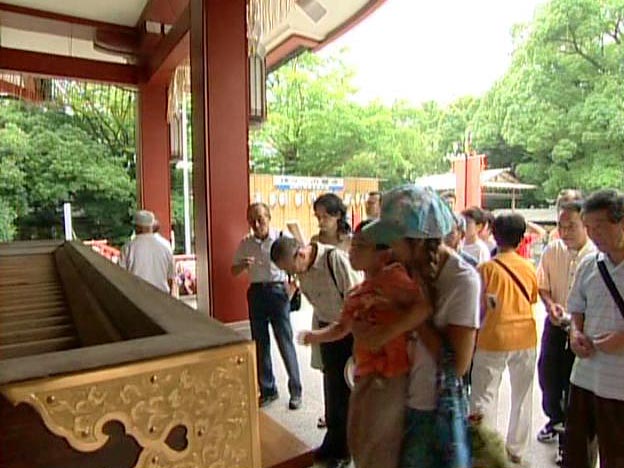 Offertory box
Offertory box
At shrines, you put money in a wooden box, clap your hands and pray to the god. You silently make a wish in your mind.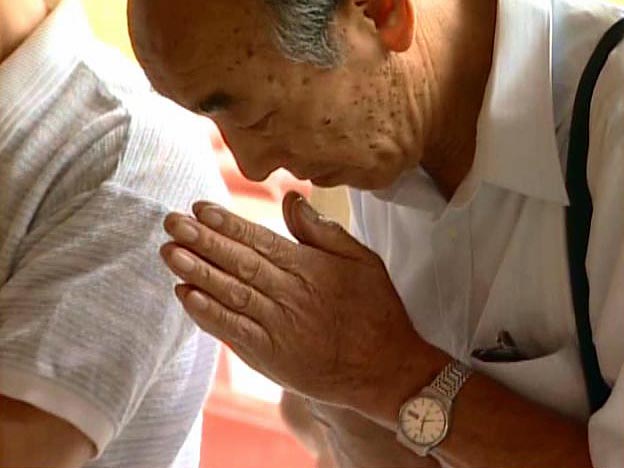 Praying
Praying
When you pray, you bow twice, clap your hands twice, and bow again. You join your hands in prayer.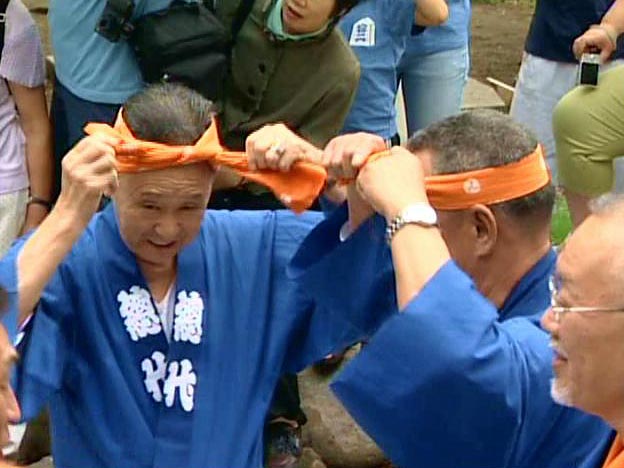 Hachimaki headband
Hachimaki headband
When you carry a portable shrine, you wear a towel called a hachimaki around your head.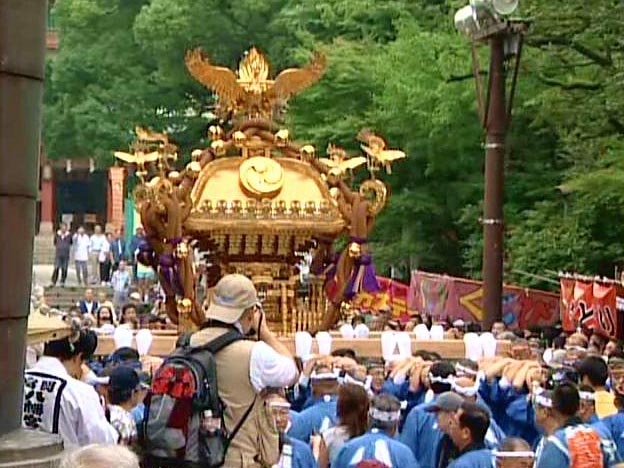 Carrying a portable shrine 1
Carrying a portable shrine 1
This is a shrine festival. People are carrying a portable shrine.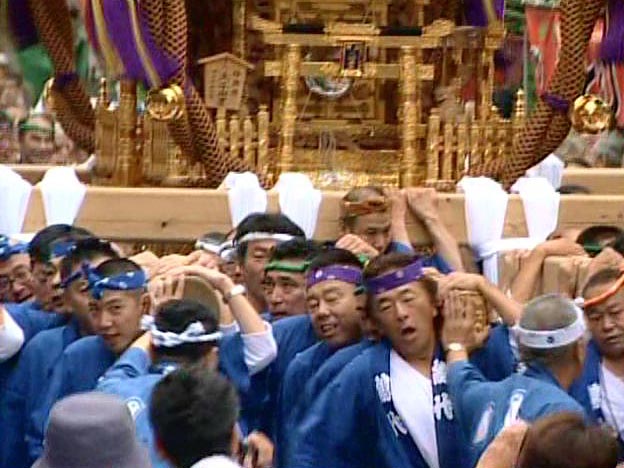 Carrying a portable shrine 2
Carrying a portable shrine 2
Because the portable shrine is heavy, many people join together to carry it. It weighs 2 tons.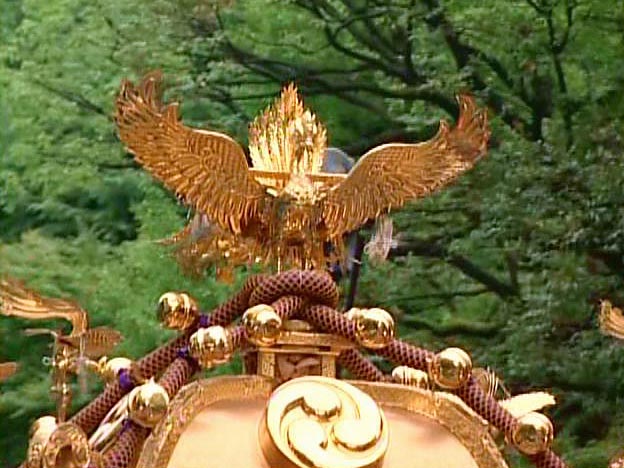 Chinese phoenix
Chinese phoenix
The portable shrine is adorned with many large and beautiful decorations. This bird is a Chinese phoenix, an imaginary lucky bird originally from China.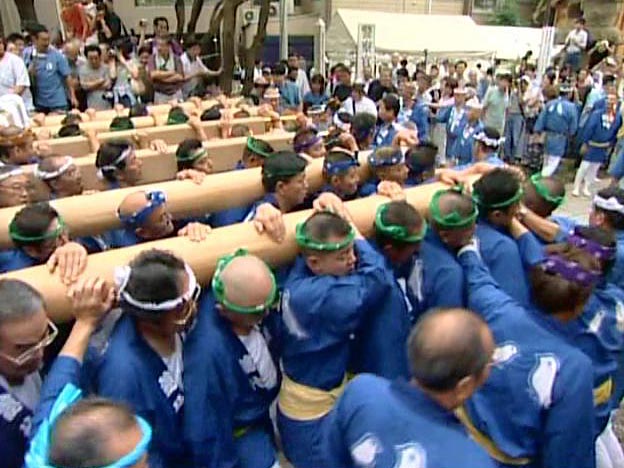 Carrying a portable shrine 3
Carrying a portable shrine 3
When you carry a portable shrine, you say Wasshoi, wasshoi [heave, heave]! At some festivals, you say Essa, Soiya, or Seiya. All carriers of the portable shrine wear happi or hanten festival coats and hachimaki headbands.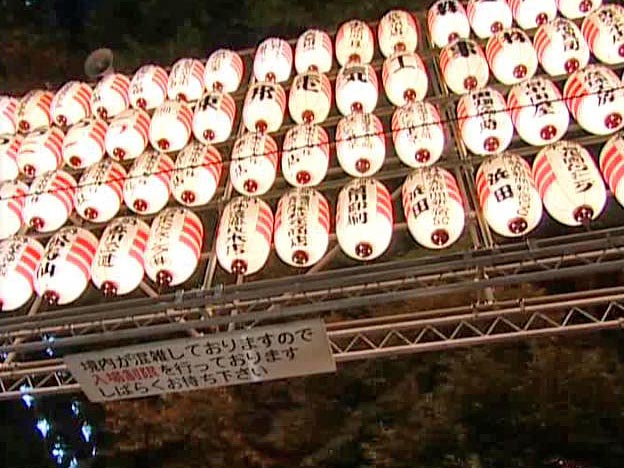 Japanese lanterns
Japanese lanterns
A Japanese lantern is traditional type of lighting equipment. It was originally made of Japanese paper and a candle was used. These days many lanterns are made of plastic sheets and have light bulbs.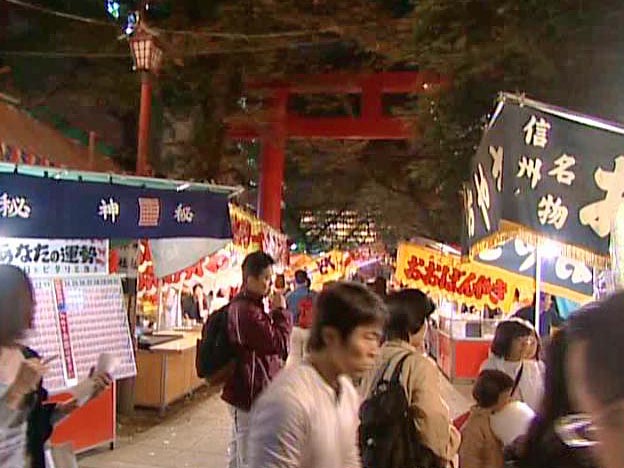 Festival 1
Festival 1
At festivals there are many stalls selling food or omikuji paper fortunes. At some stalls you can play a game. The stalls are usually called yatai, although sometimes they are called yomise.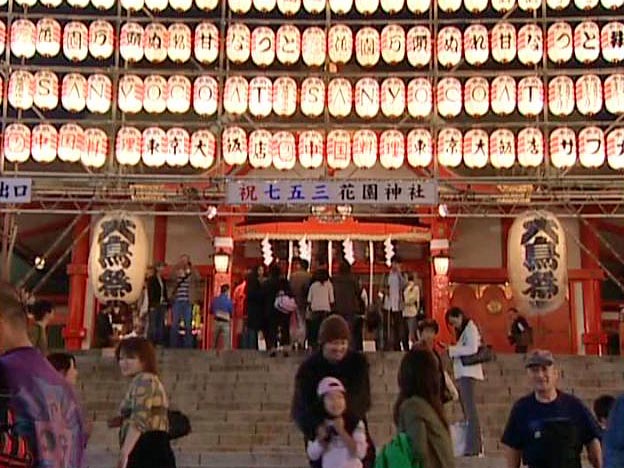 Tori no Ichi
Tori no Ichi
This is one of the festivals called Tori no Ichi, which are held in many places. This is the Otorimatsuri festival of Hanazono Shrine in Shinjuku, Tokyo. It is held every November and attracts 600,000 people.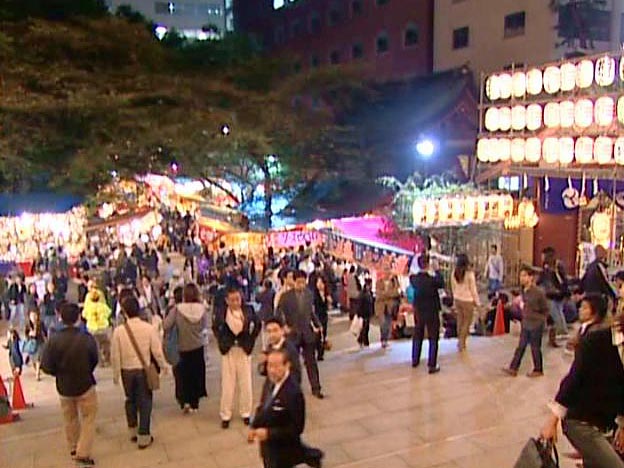 Festival 2
Festival 2
Stalls are most lively at night. There are many stalls around the shrine.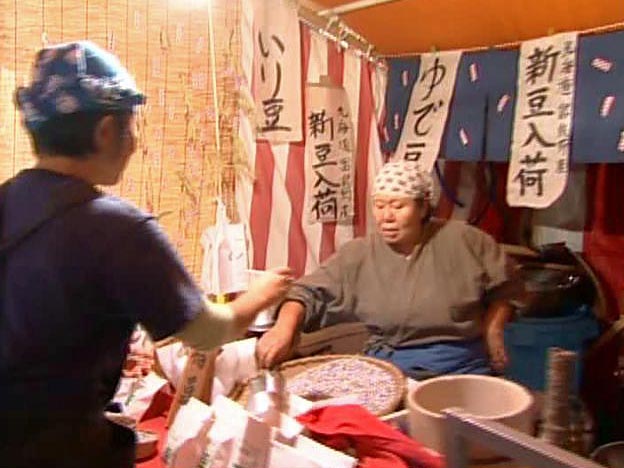 Stall <Beans>
Stall <Beans>
Many foods are sold at stalls. This stall is selling beans.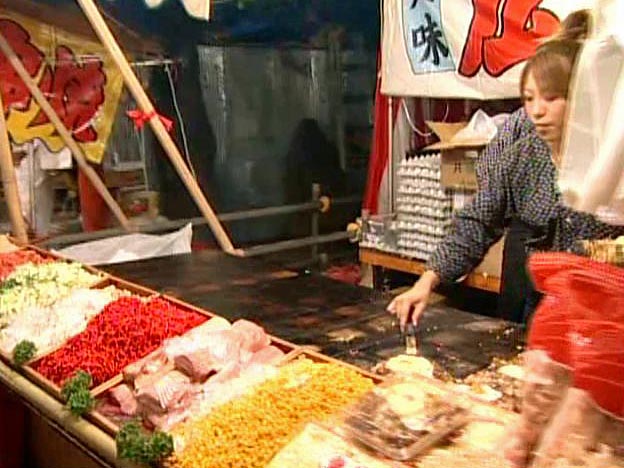 Stall <Okonomiyaki>
Stall <Okonomiyaki>
This stall sells okonomiyaki. Okonomiyaki is a specialty of Osaka and Hiroshima. It is a thin and flat pancake of water, flour, eggs, vegetables and meat, and is cooked on a hot plate. It is a popular food at stalls.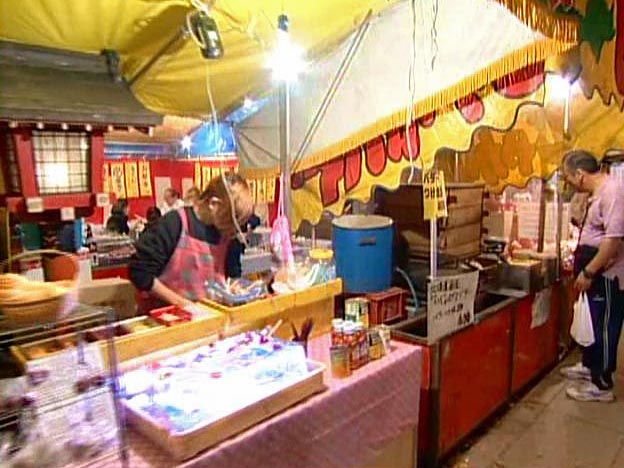 Stall <Anzu-ame>
Stall <Anzu-ame>
These are sweets sold at festivals. Pieces of fruit, such as apricots, apples, or tangerines, are coated with clear mizuame candy. They are placed on ice because the coating easily sticks to other things.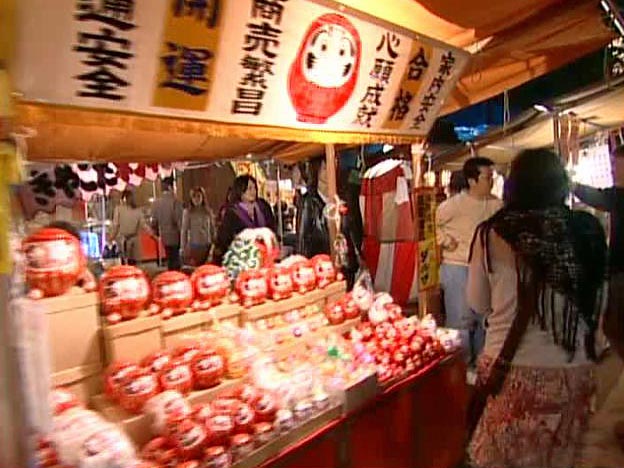 Stall <Daruma>
Stall <Daruma>
Dolls called daruma are also sold. When you buy a daruma, its eyes are blank. You blacken only the left eye with a brush when you wish for something. If the wish comes true, you then blacken the right eye, too.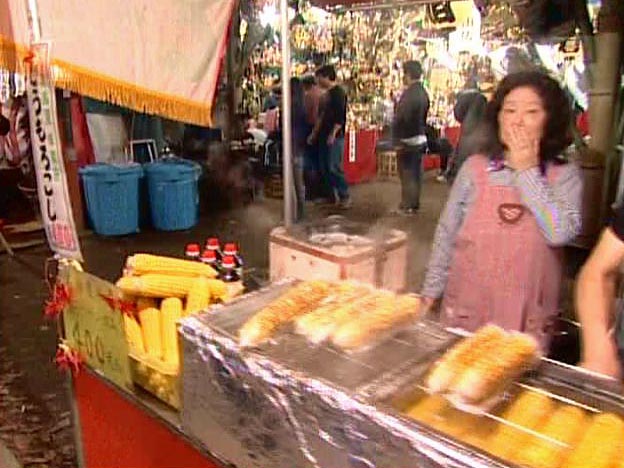 Stall <Corn on the cob>
Stall <Corn on the cob>
This is a stall selling corn. Boiled ears of corn are grilled with soy sauce. With a tasty aroma, the corn is delicious.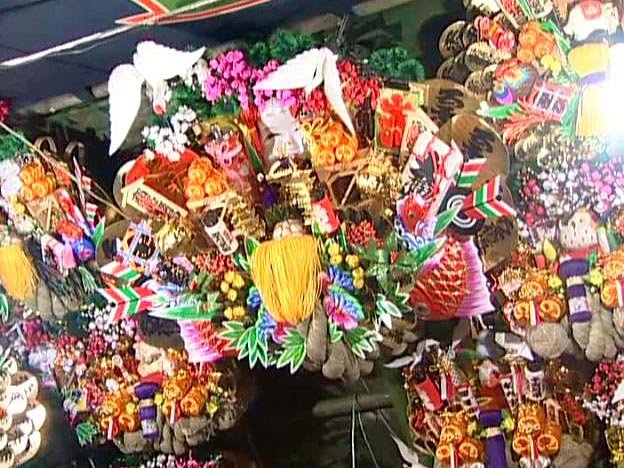 Kumade 1
Kumade 1
This is a good-luck charm called a kumade rake. It is a famous item at Tori no Ichi festivals. It is said that a kumade "rakes in" happiness and money. You can see it at many shops because the shopkeepers are wishing for good business.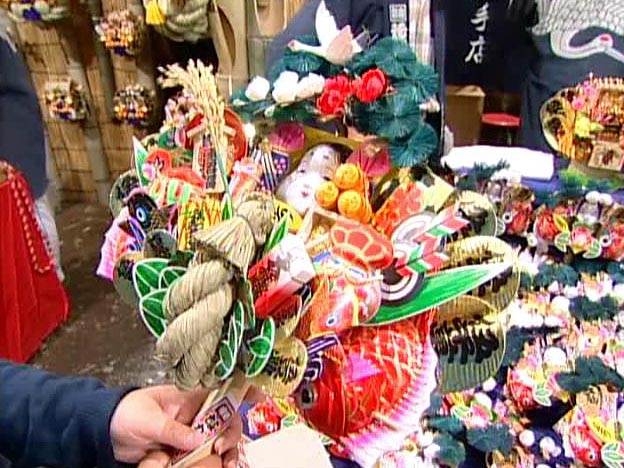 Kumade 2
Kumade 2
Rakes are decorated with lucky ornaments, such as sea bream, old gold coins, miniature straw rice bags, or an okame mask.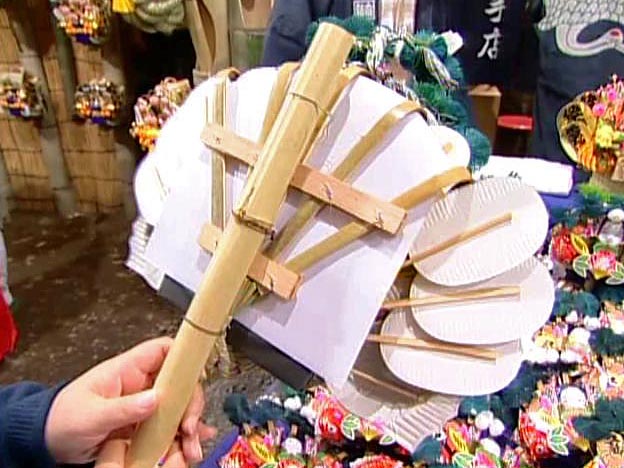 Kumade 3
Kumade 3
A rake is originally a tool to collect fallen leaves. At Tori no Ichi, rakes with lucky ornaments are sold as good-luck charms.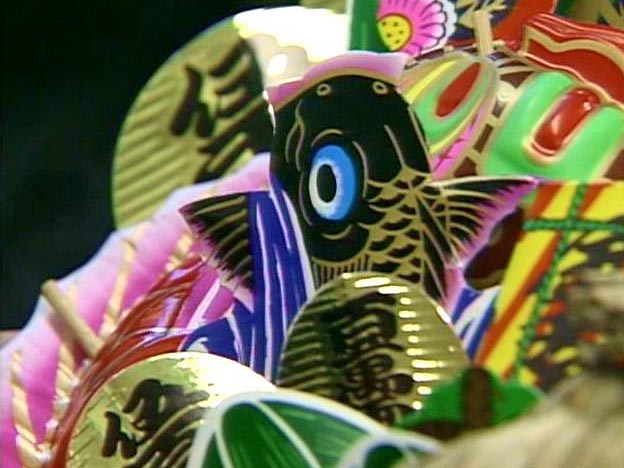 Kumade 4 <Carp>
Kumade 4 <Carp>
Carp are said to be able swim up a waterfall. So a carp is a charm for a successful career.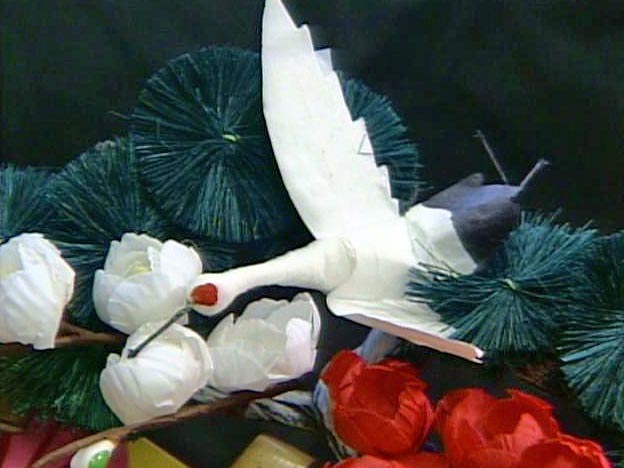 Kumade 5 <Crane>
Kumade 5 <Crane>
A crane is said to live to 1,000 years of age. It is a lucky bird symbolizing longevity.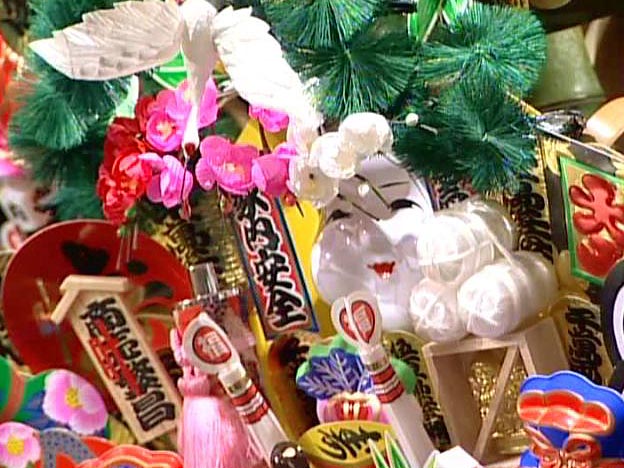 Kumade 6 <Okame>
Kumade 6 <Okame>
Rakes are also decorated with small signs carrying wishes for a family's safety and health or success in business. A woman's mask is called okame. It is a lucky mask.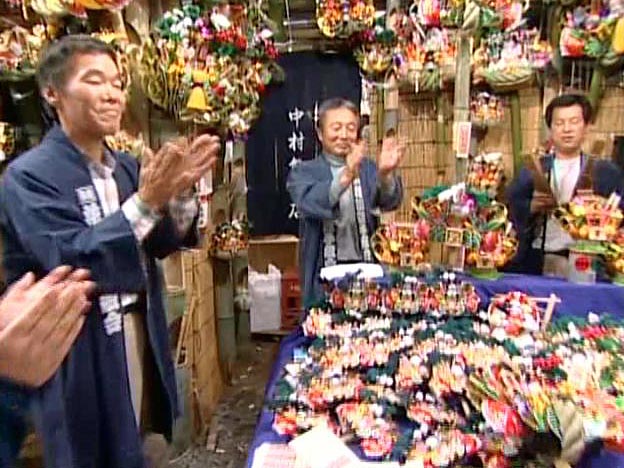 Kumade sellers
Kumade sellers
When you buy a rake, all shop staff celebrate your impending good fortune. They all clap their hands following the sanbonjime rhythm. It is a traditional rhythm for a ceremonial hand-clapping.

